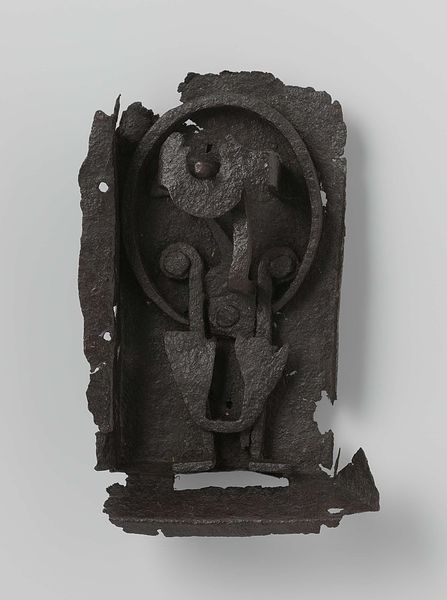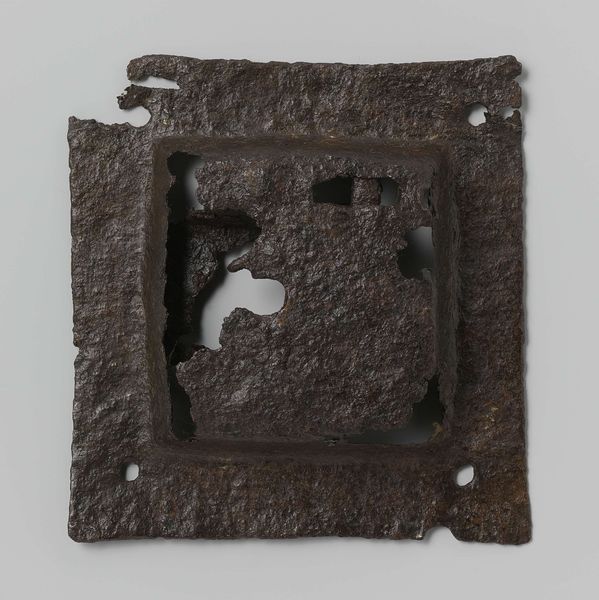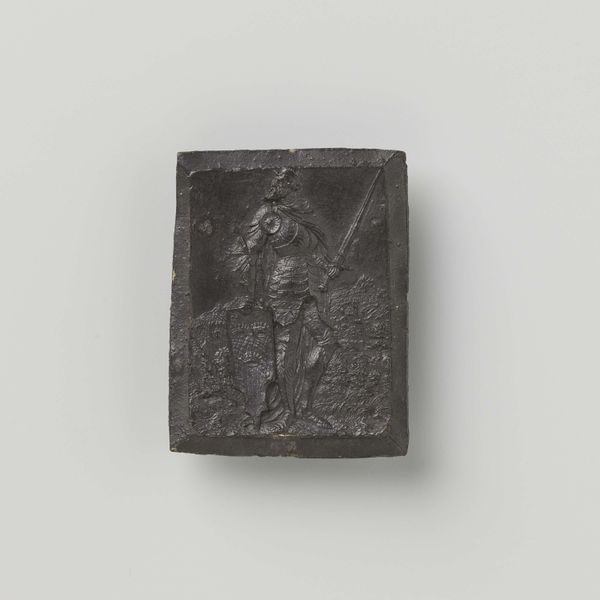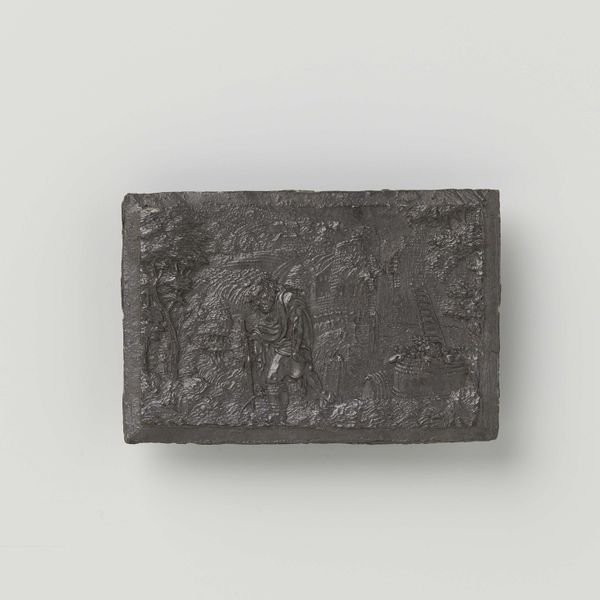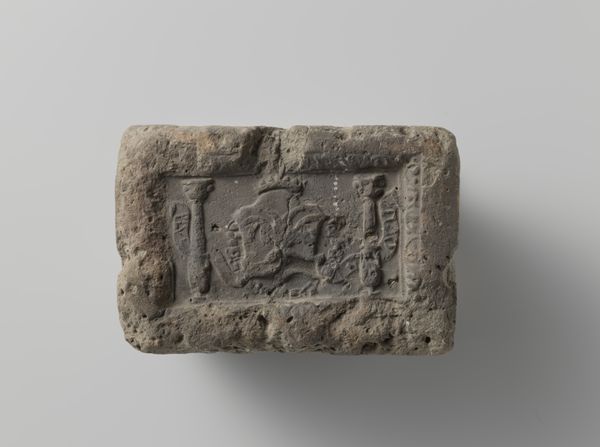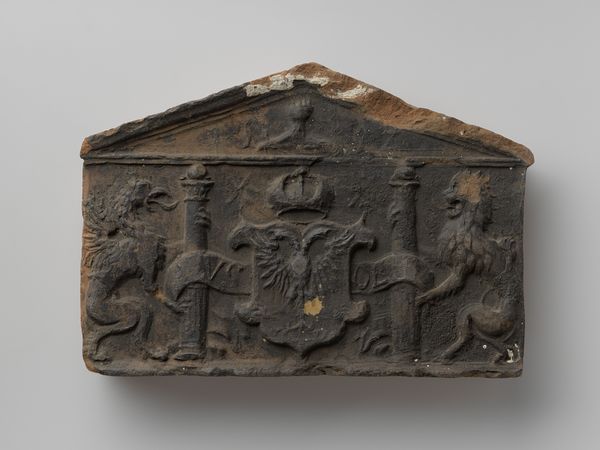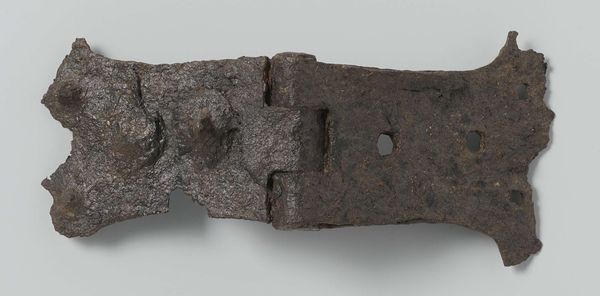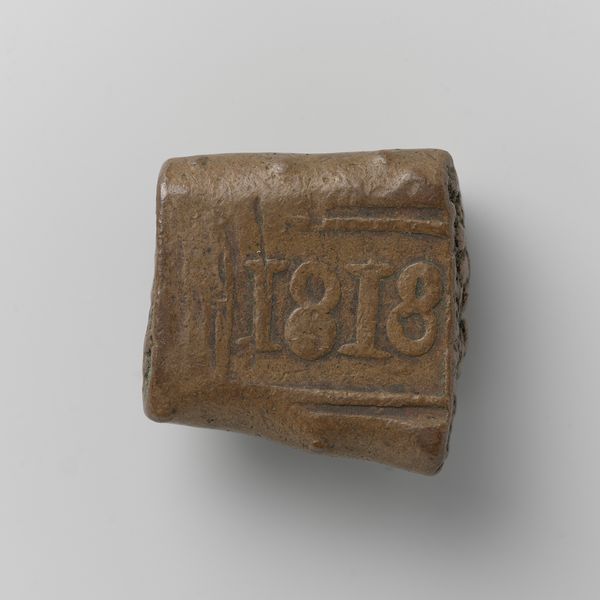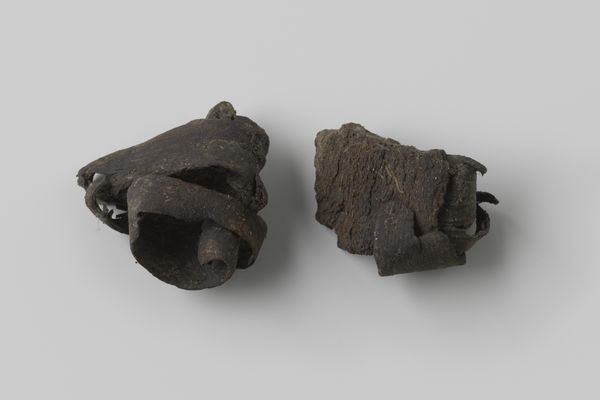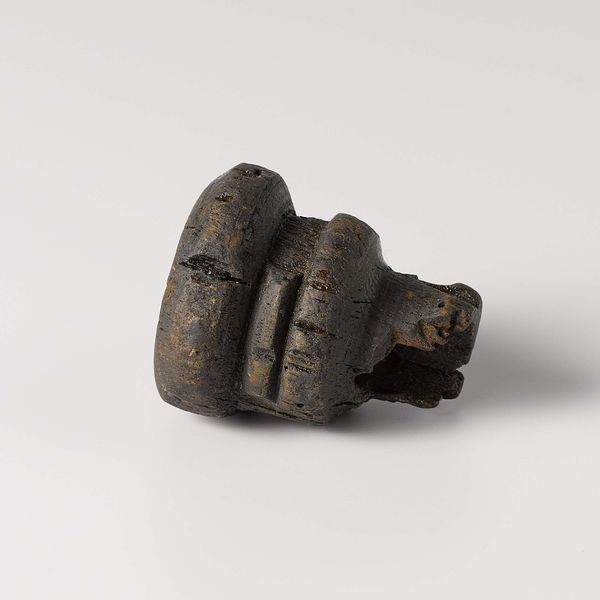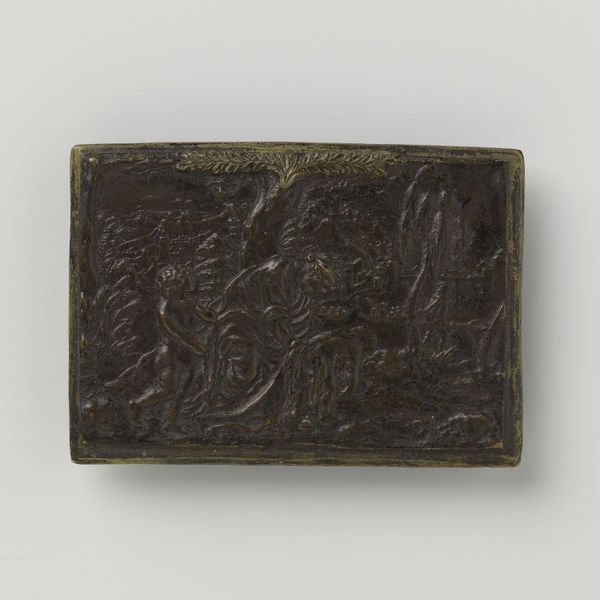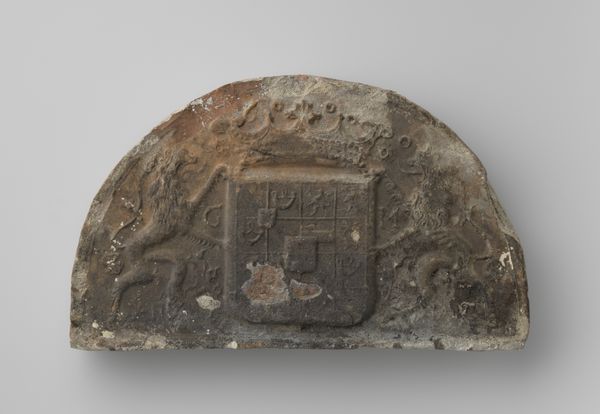
Binnenwerk van een slot, met gedeelte van een vastgeroeste sleutel c. 1590 - 1596
0:00
0:00
anonymous
Rijksmuseum
metal, sculpture
#
medieval
#
metal
#
sculpture
#
form
#
sculpture
#
realism
Dimensions: height 17.5 cm, width 17.5 cm, depth 10.5 cm
Copyright: Rijks Museum: Open Domain
Curator: This intriguing object before us is titled "Interior of a Lock, with Part of a Rusted Key," dating back to approximately 1590-1596. Its maker is unknown. Composed of metal, this anonymous piece is currently held at the Rijksmuseum. Editor: My first impression is how brutally physical it is, like some excavated ruin. Its dense texture tells stories of time and of human constraint. You can practically smell the iron oxide. Curator: Indeed. Even divorced from its original setting, the image conjures such concepts of security, access, and perhaps, a sense of paranoia. Consider the symbolic weight of locks during this period. Homes were not merely dwellings, but social ecosystems shaped by hierarchical relations. Editor: And the rusted key! Implying failed access or perhaps enforced isolation. We can’t ignore how historical power structures depended upon denying or granting freedom of movement. Who did this lock protect and whom did it exclude? Was it guarding wealth, secrets, or even people? Curator: Precisely! The formal composition only amplifies this drama. See how the key’s fragmented form contrasts with the assertive, albeit decaying, shape of the lock's structure itself. It also subtly highlights the futility of human-made structures against the unyielding corrosion of time. Editor: I see it as speaking directly to our current dialogues on safety and surveillance. Who designs the systems that permit or deny access in our digital age? What rusted keys prevent full and equal participation within society? Curator: Absolutely. The object really transcends its original utility. This lock serves almost as an unsettling meditation on power, fragility, and ultimately, transience. Editor: Yes, while initially unassuming, the object challenges us to consider our own architectures of control, reminding us to dismantle any oppressive mechanisms we encounter, be they metal or metaphysical.
Comments
No comments
Be the first to comment and join the conversation on the ultimate creative platform.
